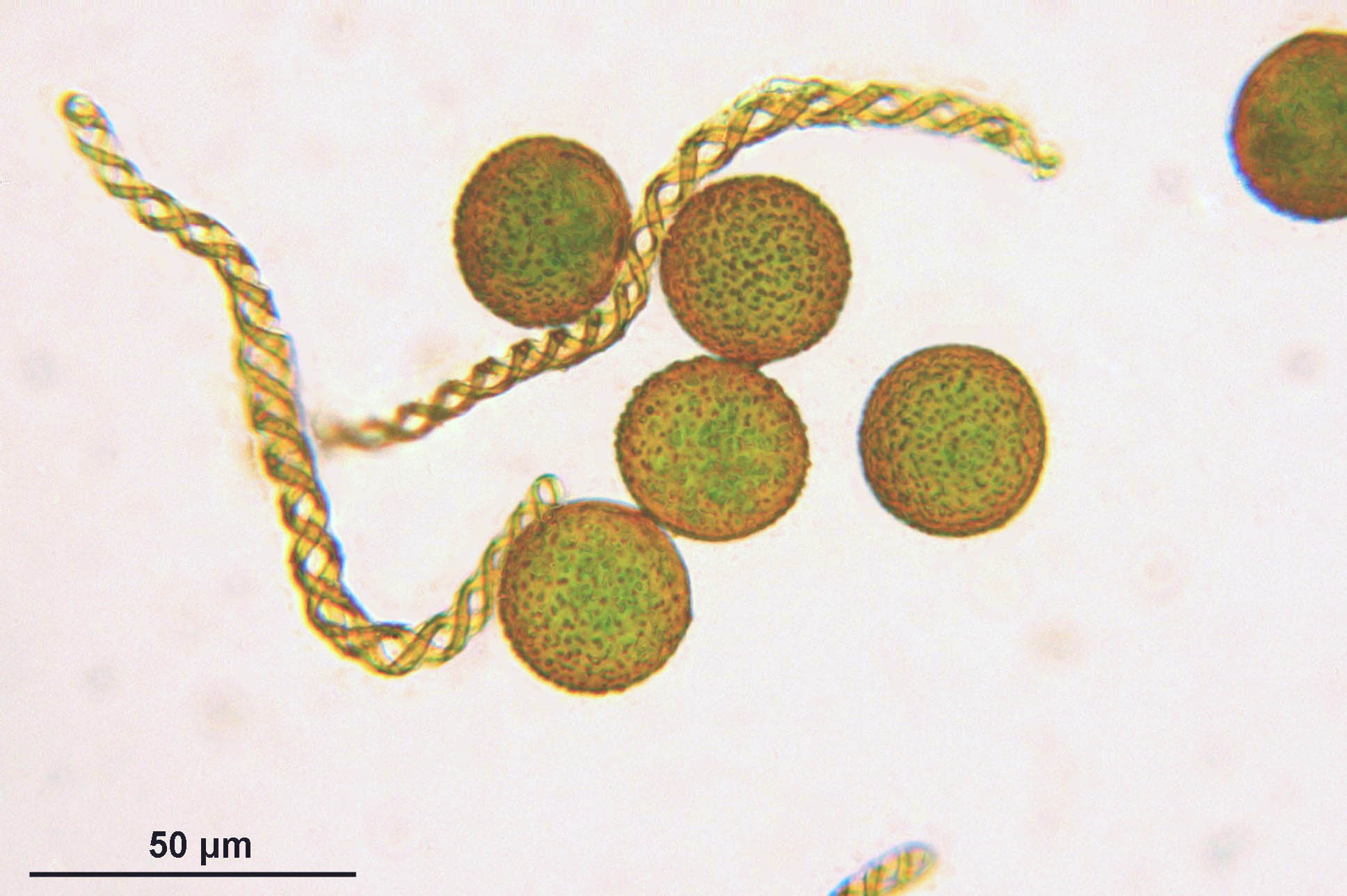elater on:
[Wikipedia]
[Google]
[Amazon]
An elater is a

cell
Cell most often refers to:
* Cell (biology), the functional basic unit of life
Cell may also refer to:
Locations
* Monastic cell, a small room, hut, or cave in which a religious recluse lives, alternatively the small precursor of a monastery ...
(or structure attached to a cell) that is hygroscopic
Hygroscopy is the phenomenon of attracting and holding water molecules via either absorption or adsorption from the surrounding environment, which is usually at normal or room temperature. If water molecules become suspended among the substan ...
, and therefore will change shape in response to changes in moisture
Moisture is the presence of a liquid, especially water, often in trace amounts. Small amounts of water may be found, for example, in the air (humidity), in foods, and in some commercial products. Moisture also refers to the amount of water vapo ...
in the environment. Elaters come in a variety of forms, but are always associated with plant
Plants are predominantly photosynthetic eukaryotes of the kingdom Plantae. Historically, the plant kingdom encompassed all living things that were not animals, and included algae and fungi; however, all current definitions of Plantae exclu ...
spores. In many plants that do not have seeds, they function in dispersing the spores to a new location. Mosses do not have elaters, but peristome Peristome (from the Greek ''peri'', meaning 'around' or 'about', and ''stoma'', 'mouth') is an anatomical feature that surrounds an opening to an organ or structure. Some plants, fungi, and shelled gastropods have peristomes.
In mosses
In mosse ...
s which change shape with changes in humidity or moisture to allow for a gradual release of spores.
Horsetail elaters
In thehorsetail
''Equisetum'' (; horsetail, snake grass, puzzlegrass) is the only living genus in Equisetaceae, a family of ferns, which reproduce by spores rather than seeds.
''Equisetum'' is a "living fossil", the only living genus of the entire subclass ...
s, elaters are four ribbon-like appendages attached to the spores. These appendages develop from an outer spiral layer of the spore wall. At maturity, the four strips peel away from the inner wall, except at a single point on the spore where all four strips are attached.
Under moist conditions, the elaters curl tightly around the spore. The wet spores tend to stick to each other and to nearby surfaces because of surface tension. When conditions are dry, the spores no longer stick to each other and are more easily dispersed. At that time, the elaters uncoil to extend out from the spore and will catch air currents. The fact that they are extended only when conditions are dry means that successful spore dispersal is more likely.
Liverwort elaters
In the liverworts also known as hepaticopsida xample ''Riccia'',''Marchantia'' elaters are cells that develop in the sporophyte alongside the spores. They are complete cells, usually withhelical
Helical may refer to:
* Helix, the mathematical concept for the shape
* Helical engine, a proposed spacecraft propulsion drive
* Helical spring, a coilspring
* Helical plc, a British property company, once a maker of steel bar stock
* Helicoil
A t ...
thickenings at maturity that respond to moisture content.
In most liverworts, the elaters are unattached, but in some leafy species (such as '' Frullania'') a few elaters will remain attached to the inside of the sporangium (spore capsule).
Hornwort pseudo-elaters
In the hornworts, elaters are branched clusters of cells that develop in the sporophyte alongside the spores. They are complete cells, usually withouthelical
Helical may refer to:
* Helix, the mathematical concept for the shape
* Helical engine, a proposed spacecraft propulsion drive
* Helical spring, a coilspring
* Helical plc, a British property company, once a maker of steel bar stock
* Helicoil
A t ...
thickenings (except in the Dendrocerotaceae).
References
* Bold, Harold C., Alexopoulos, Constantine J., & Delevoryas, Theodore. (1987). ''Morphology of Plants and Fungi'', (5th ed.). New York: Harper & Row. . * Campbell, Douglas Houghton. (1918). ''The Structure and Development of Mosses and Ferns'', (3rd ed.). New York: The Macmillan Company. * Kenrick, Paul & Crane, Peter R. (1997). ''The Origin and Early Diversification of Land Plants: A Cladistic Study''. Washington, D. C.: Smithsonian Institution Press. {{ISBN, 1-56098-730-8. * Smith, Gilbert M. (1938). ''Cryptogamic Botany, Volume II: Bryophytes and Pteridophytes''. New York: McGraw-Hill Book Company. Plant anatomy